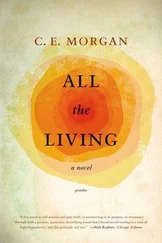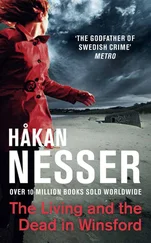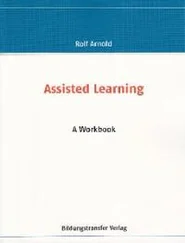Nikanor Teratologen
Assisted Living: A Novel
Assisted Living is written in Skelleftemål, a dialect found in northern Sweden. This presents the English translator with yet another version of the eternal question: how much of the original text does one try to keep, and how much does one allow to be “lost in translation”? After careful consideration, and a few failed experiments, I decided to translate the book into more or less “good English.” After all, I asked myself, and speaking as an American, what could approximate a Swedish dialect in US English? Should I try to make the book sound “regional”? Should backwoods Swedes talk like stereotypical southern “hicks”? Even if I could pull off an authentic sounding text — no mean feat in itself — why should someone from Sweden sound like they’re from south Texas? (As a Texas native, a Texas drawl was foremost in my mind.) But, no. Translators must always walk that fine line between the original text and their new translation. In creating something new, something will always be lost — and perhaps gained. As Nikanor Teratologen, reviewing the English text, recently put it: “What we have here is a good Luciferan read.”
If I’ve done my job, the reader will agree.
Kerri A. Pierce
Or, Caring for the Elderly in Upper Kågedalen
NIKANOR TERATOLOGEN’S PREFACE
A dear friend with exquisitely cruel tastes entrusted me with the text you now hold in your hand.
This friend, a man of both honor and lust, strongly insists that he retain his anonymity.
I, supervisor of all sovereign creatures, chronicler of dead voices, guarantor of the world order, thus place myself between him and the other human animals. Thus do I say to cocknibblers and assassins alike: come to me … we’ll see if the masterhand won’t clench itself in the right orifice …
I’ve always preferred pick-up sticks to chess anyway …
Last summer I murdered an eleven-year-old boy. He said his name was Helge Holmlund from Hebbershålet in Upper Kågedalen, North Västerbotten. We met at a urinal in Tivoli just as Mens Night was dosing in on Childrens Day. He struck me as the quiet, frail type — and it was love at first sight. I took him home, and after he’d performed certain services, I tied him up and locked him in the soundproof cellar I use for such occasions.
For six whole days he gave me exquisite pleasure. After that, I hacked his body into small pieces, wrapped the meat in plastic, priced it, and distributed the packages to a number of different display cases in and around Skellefteå.
I kept his head for my little collection.
While I was burning the boy’s clothes and other things, I found a hefty stack of old wallpaper samples tucked in his ratty leather backpack. Each sample was scribbled over in a child’s erratic, immature hand, the words all written in different colored pencils. As I made my way through a few of these fragments, words utterly failed me. A brave new world opened before my eyes — one of vile pleasures and terrifying abominations — with the power to touch me in ways I no longer thought possible. Chuckling at his impudence, weeping at his tender sentiment, trembling with sorrow, paralyzed by hate — I sorted these rough fragments and organized them into a number of offensively seductive stories, each one presumably written by the dead boy.
My philological training proved extremely useful in tackling the difficulties posed by these unusually precocious recollections, which the boy had misleadingly entitled Assisted Living. I also made discrete inquiries into the poor boys past, a quest that took me far off the beaten path and into the dark and brooding Northland nightwoods, home to more terrifying legends than any one person is capable of taking in. I wandered down what seemed to me contaminated paths through a hazardous landscape. On both sides of the Kågeälven, the dark river, the earth is fertile and the view open. I could see dirty-gold barley fields, resilient swaths of hay pasture, fallow fields, and hopeful new patches of almond potatoes, all stretching away before me; there were graying Västerbotten farmhouses in various states of decay, though clumps of willow trees and stands of birches try to hide the worst of it. Each of these farmhouses is set well back from the road and has a long approach leading up to it. It’s obvious that the people in these parts want to know who’s coming; they keep to their own. However, you can still find a few beautiful old Västerbotten farms scattered here and there: dark red timber houses with white doors, small porches, and shingled roofs. For the most part, though, pale and dull dwellings, each one identical to its neighbor, have takenover the region. The empty cow barns (which the locals call fusen ) yawn empty. Now they use silos. In these parts, there’s a chapel for every ten homesteads. Everything’s modest and respectable, people pride themselves on their rancor and cunning both. Only old people are left now, out in the country, though in the sparsely populated regions of Ersmark and Kusmark a few communities still try to scrape by: making condoms for Skega and crying outside their closed church. Mystery has vanished from the forests surrounding the riverbed. Winter in these parts is hard. Blizzards numb all human feelings; one’s gaze turns inward. During the long winter, people do their best to forget. Imperceptibly the valley fades away, the colors change. Spruces and pines cover the gently descending hillsides. A spiderweb of woodland roads (leading nowhere) spreads throughout the forest. Everything is condemned to be cut down and carted away. The trees are taller and darker here; their melancholy is more powerful than life. The fact that the valley has no visible borders makes escape impossible.
Farther up, the scene remains unchanged. In fact, the character of the dell becomes even more pronounced where Kågedalen nears its end — until, finally, it becomes transcendental. A large power line running from Svartbyn in Norrbotten to Jälta in Ångermanland splits the countryside in half. The forest here draws close to the rugged dirt road; the same is true of the humble homes in the small villages. Every now and then you catch a glimpse of cultivated land: forest-clad ridges crisscrossed by brown swaths of clear-cutting; forgotten, outworn meadows — once worked, now overgrown — boldly marching down toward Hebbersbäcken’s shallow watercourse. At Slyberget this creek joins the northward-bound Kågeälven, before proceeding alongside the road to Bottenviken. In short, the landscape in Upper Kågedalen is nerve-wracking, bewitching, and pristine. People here aren’t too concerned with planting and harvest time; something else fills their minds. The observer is overwhelmed by the mood of sorrow, severity, and loneliness that pervades the atmosphere. The air here is clear, you see all too clearly, but the forest holds an eternal darkness. Human hands could never rob the countryside of its austere grandeur. The old people in these parts are cut from the same cloth. When the time comes, they hang themselves— silently, calmly, expertly — from the rafters of the abandoned cow barns. Grand gestures have no place here. No one even talks about it. What would be the point?
Naturally, I questioned the people in the villages of Upper Kågedalen under false pretenses. Still, they met this polite and scholarly stranger with silent gestures meant to ward him off; and, more often than not, with curses or the evil eye. I preferred concentrating on the shier old men — frail and soft, infant-voiced and doe-eyed— who, after a litany of stops and starts, would finally start rooting around in their own overwhelming oblivion and return with what they found there, which they would pronounce in voices like the newly weaned. Hebbersfors, Hebbersliden, Hebbersholm were all familiar. However, no one knew anything about Hebbershålet. People insisted they’d never heard of, much less met, an old man with a little grandson. It seemed Holger Holmlund was an unknown party. The same was true of Helge. Names from their circle of acquaintance likewise turned up nothing. In the end, banal reality threatened to bury myself and my fantasies beneath its everyday offal.
Читать дальше












